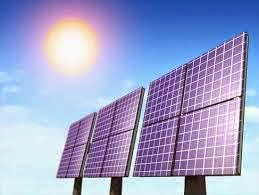IronRidge Solar Racking by Blue Pacific Solar is a leading solution in the renewable energy sector, specifically designed to optimize solar panel installations with durability, efficiency, and environmental consciousness in mind. As the demand for sustainable energy sources grows, companies like IronRidge are pivotal in shaping the landscape of solar technology.
Introduction to IronRidge Solar Racking
IronRidge, a renowned name in solar mounting systems, offers robust solutions through its innovative Solar Racking products. These racking systems are engineered to support solar panels securely and efficiently on various types of roofs and ground installations. One of their standout products, the IronRidge XR Rail, exemplifies their commitment to quality and performance in the solar industry.
Key Features and Benefits
1. Durability and Strength
IronRidge Solar Racking systems are built to withstand diverse environmental conditions. The XR Rail, for instance, is constructed from high-grade aluminum, ensuring corrosion resistance and structural integrity over many years of service. This durability translates to long-term reliability, making it a preferred choice for solar installers and homeowners alike.
2. Flexibility in Design
Versatility is another hallmark of IronRidge’s offerings. The XR Rail supports various mounting configurations, accommodating different panel sizes and layouts. This flexibility allows for optimal positioning of solar arrays to maximize energy production based on site-specific conditions, such as sunlight exposure and roof orientation.
3. Installation Efficiency
Efficiency is crucial in solar projects, and IronRidge excels in streamlining the installation process. Their racking systems feature innovative components like QuickMount PV® attachments and grounding options that simplify assembly and ensure compliance with electrical codes. This not only saves time but also reduces labor costs, enhancing overall project economics.
4. Safety and Compliance
Safety is paramount in solar installations, and IronRidge addresses this with rigorously tested products that meet or exceed industry standards. Their racking systems undergo extensive testing for structural integrity and electrical safety, providing peace of mind to installers and homeowners alike.
5. Environmental Considerations
Beyond performance, IronRidge is committed to sustainability. Their products are designed with recyclability in mind, minimizing environmental impact throughout their life cycle. By choosing IronRidge Solar Racking, consumers contribute to a greener future by harnessing clean energy efficiently and responsibly.
Case Studies and Real-World Applications
IronRidge Solar Racking has been successfully deployed in numerous residential, commercial, and utility-scale projects worldwide. Case studies highlight its reliability in diverse environments, from snowy regions to coastal areas prone to salt exposure. Installers consistently praise its ease of use and the support provided by IronRidge in navigating complex installations.
Conclusion
In conclusion, IronRidge Solar Racking by Blue Pacific Solar stands as a testament to innovation and reliability in the solar energy sector. With its durable construction, design flexibility, and commitment to sustainability, IronRidge continues to empower solar installers and homeowners to harness the power of the sun effectively. As the demand for clean energy solutions grows, IronRidge remains at the forefront, driving the adoption of solar power through superior products and unwavering dedication to quality.

